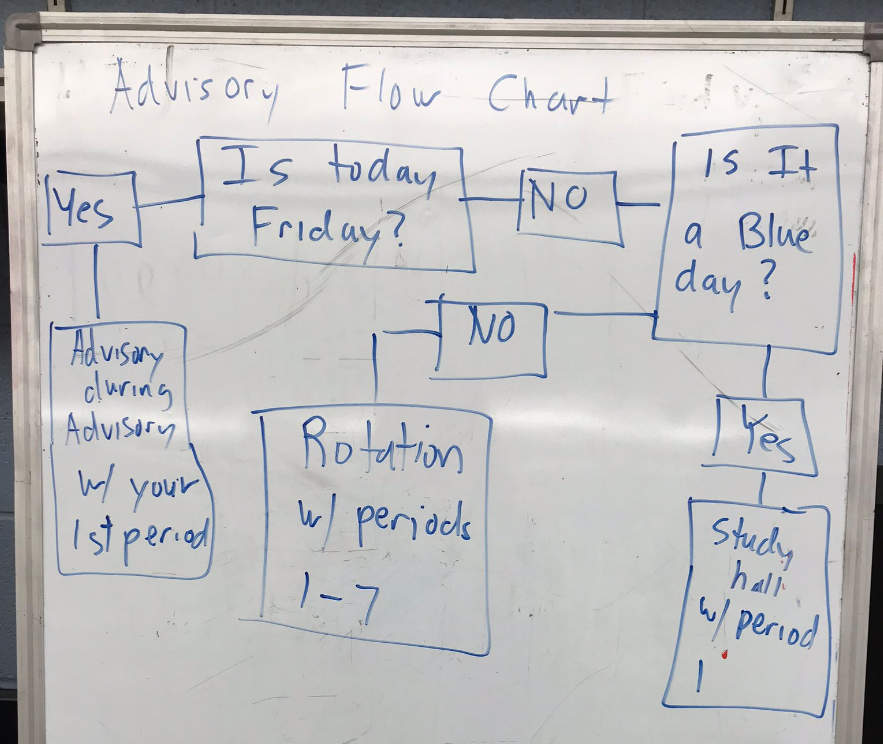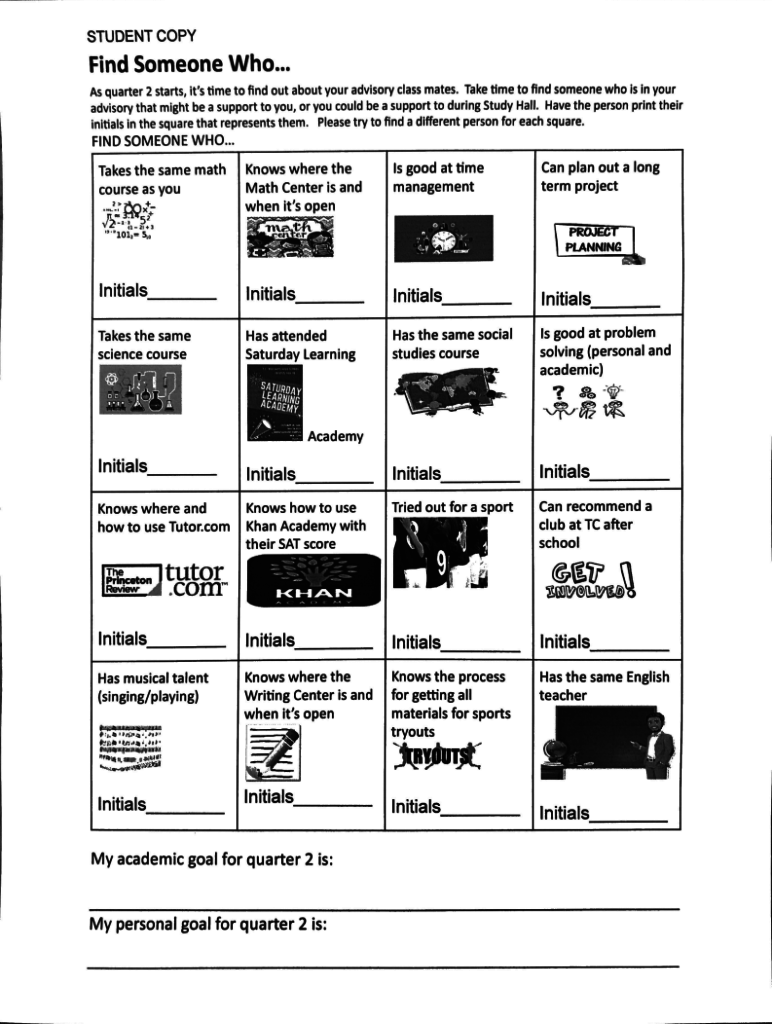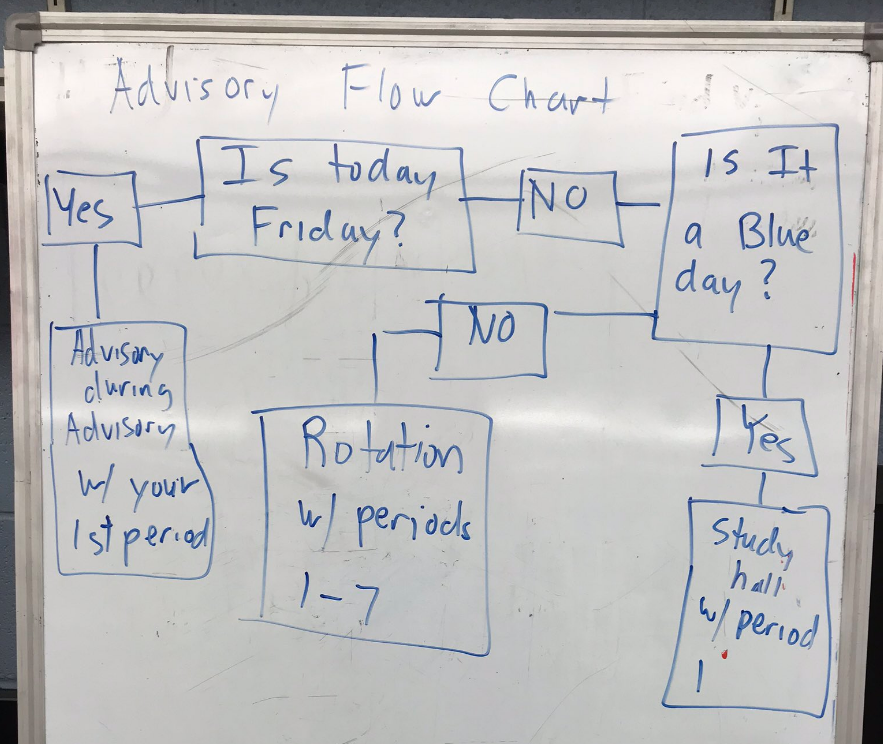Students Express Displeasure With The Change
Alexis Larsen
Starting Second Quarter, the advisory period was changed from going to the same specific class every day to a complex schedule of changing classes varying by the day, similar to the schedule used last year. The change is vastly disliked by most students, and with good reason.

On Red Days, called “remediation rotation,” students rotate through each of their periods during the advisory block, with the intention of giving the teachers more time to instruct. On Blue Days, students stay in their first period class for a study hall, and on Fridays, regardless of the day’s color, the class participates in a “community circle” or other Kagan related activities.
Study halls are important for numerous reasons. Students’ lives are busy. Their schedules are filled with sports, jobs, hobbies, clubs, and many other activities. With multiple hours of homework stacked on to their schedule, students’ average days are packed.
In 2013, the University of Phoenix College of Education released a survey in which it asked teachers how much homework they gave their students daily. They found that on average, students receive 3.5 hours of homework a day, which adds to a whopping 17.5 hours of work a week. This does not include time spent studying for tests and quizzes.
While T.C. uses a block schedule, which gives students more time between each class, they still receive hours of homework each night. Through evaluating my own classes, on average, I receive two hours of homework on Red Days and four hours on Blue Days. This totals to 16 hours of homework on Red weeks, when the majority of days are Red, and 14 hours of homework during Blue weeks.
Study halls have been traditionally implemented to help alleviate the workload for students, but, on average, T.C. students only get one hour of study time per week between the two study hall periods. This is barely enough time for students to make a dent in their homework.
The advisory block as extra class time on Red Days is usually ineffective. Students do not find that the 27-minute period is enough time to learn anything new. The use of this extra class time varies by teacher–some teachers teach through the block, while others give their students free study time.
Red Days can also bring a great deal of confusion since students are often unsure of which class they should report to for advisory. This issue is a continuation of last year’s problems. Especially in the face of unexpected snow days, students and staff alike are uncertain of where to go. In a recent survey by Theogony, 81 students were asked about the new advisory. 67.8 percent of students reported being confused about what class to go to some/most of the time.
Community circles on Fridays might seem like a wonderful time to open up and share personal insights on relevant topics; but in truth, people do not take community circles seriously. These circles are advertised as a safe space to talk, but there is no evidence to back that safety. Once the “circle” closes, there is nothing stopping another student from spreading or making fun of something one of their classmates said. Students typically do not take the Friday activities seriously, so the idea of a thoughtful conversation is unrealistic.

Classes might participate in other Kagan related activities in addition to the regularly-scheduled Friday community circles. This mostly feels like a waste of time. “I do not feel as though the community [circle] is a benefit to myself or my peers,” one survey student said. Support groups are not a bad idea, though, and can be quite beneficial to students, but the strategies being used to make highschoolers–almost adults–talk with each other makes them feel like elementary schoolers instead.
When asked about their opinions on the “community circle” Fridays in the Theogony survey, 63.9 percent of the students felt neither supported nor did they enjoy Friday’s activities. Only 13.5 percent of students said they did feel supported and enjoyed those Friday sessions.
The Theogony survey also found that 71.6 percent of students were annoyed by the new advisory change and 34.6 percent felt angry. Meanwhile, only 11.1 percent were happy with the change, and 2.5 percent felt better supported.
“Quarter 1 was a vastly superior system, this new one is a step back and frankly [it was] asinine that it was allowed to continue,” another surveyed student said.
“I feel like I often do not get a chance to do work and lose time during the transition. I wish we were able to stay in [first] period for an enforced study hall,” a third student said.
Some students even felt a loss in teacher support, saying, “It is frustrating that we had the chance to develop a relationship with a teacher and then had that taken away only two months later.”
How can we fix this? There have been many suggestions to fix this issue, but two stick out. First, we could go back to the first quarter advisory schedule. We could also keep a constant study hall in our first period. During this study block, students would be able to visit other teachers, finish homework, or work on assignments.
In the Theogony survey, only 22.2 percent of people said they preferred the new advisory to the Quarter 1 study hall. If students enjoyed the original advisory, why did it change? The main reason for this is the fact that students have little say in most school decisions. The administration dictates our daily school lives without the input of staff or students.
There seem to be very few opportunities for students to have a say in school specific events, but the few students who have a chance do not always reflect the opinions of most students. There is no accessible “Principal’s panel” where students can bring their concerns and have a chance to make a change in school decisions. The information and access for students to have a say in their school system should be much more readily available.
Whatever the solution to this issue, one thing is certain–the rotating advisory is not working. There is an overwhelming amount of students who preferred Quarter 1 advisory or full-time first period study hall to the new schedule. Students want a change, but they have a very small outlet to voice their concerns. Administrators should take into consideration changing the study hall yet again to something more students- and staff-supported. This request is not unreasonable.



